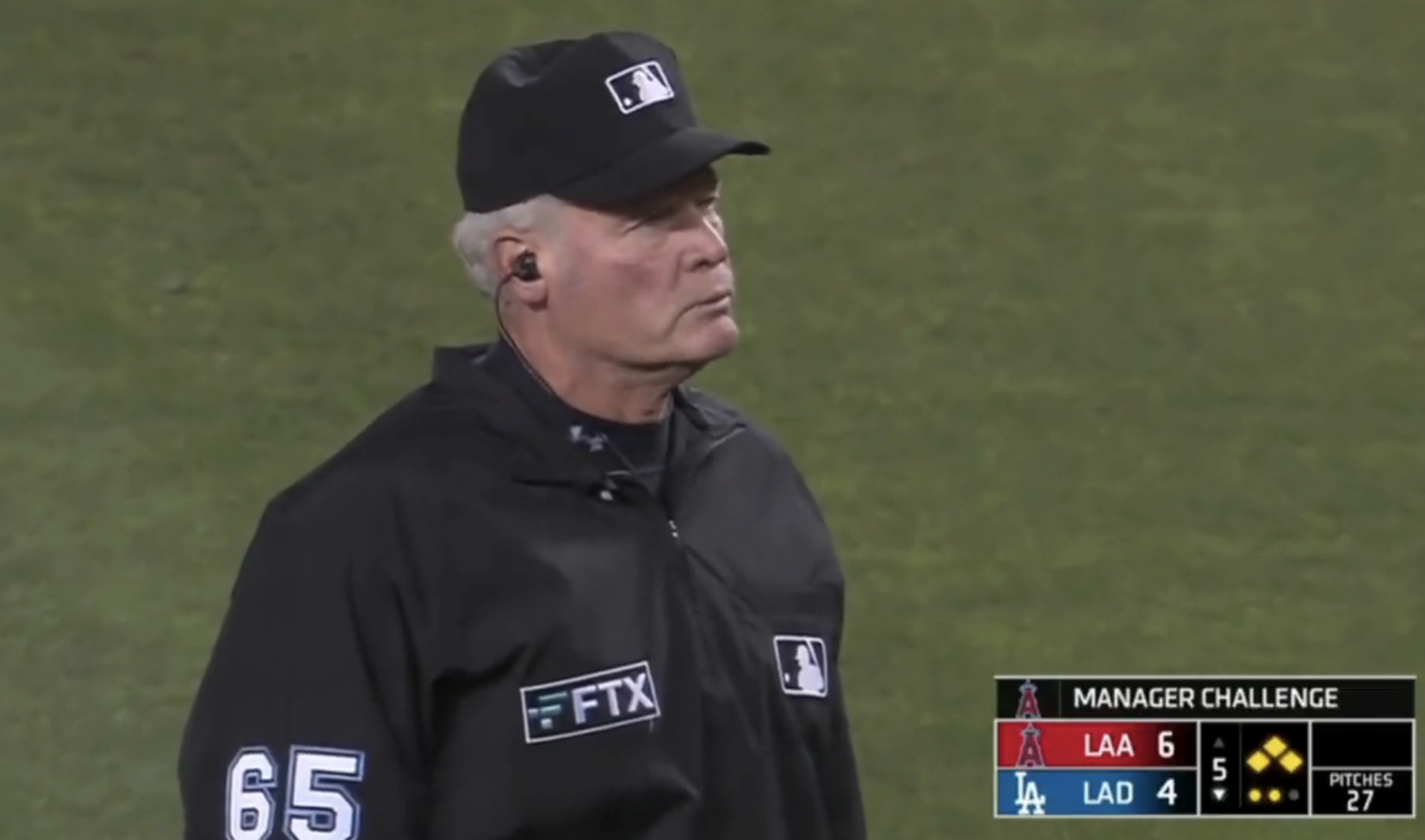New Wireless Audio Lets MLB Umpires Make All the Calls Very Loud and Clear
Announcing challenge results is intended to enhance the fan experience
Story Highlights
Listen for an important new audio element during regular-season MLB games this year: umpires will now make in-park announcements explaining decisions made during the Replay Review process.
The new wrinkle comes with its own technology rig. A combination of MLB’s Replay Operations & Technology and Media Operations teams collaborated with outside vendors to develop kit that allows umpires to interface with the league’s replay center as it remotely evaluates disputed calls and then communicate the outcomes directly both to fans in the stadium and through the broadcast via a wireless microphone, earpiece, and beltpack assembly.
The Onfield Announce system comprises a beltpack transmitter — a modified Riedel Bolero S wireless transmitter operating in the DECT frequency range — and an external system-activation unit connected by cable to a separate lavalier microphone and custom earpiece. The assembly is intended to be worn by all four umpires on each game this season.
Announced on April 1, the system debuted on Opening Day. Trainings with the system were held in Arizona and Florida this spring.
“We’re pleased to launch this enhancement to the ballpark and broadcast experiences,” the league said in a statement.
Putting the Pieces Together
MLB VP, Media Operations, Daniel Blanchard and VP, Replay Operations & Technology, Christopher Zagorski headed up the project, supervising the system’s design and engineering.
“We prioritized looking at how best to make it comfortable for the umpires — we didn’t want to load them up with a ton of hardware — and still make sure it was easy to use and reliable,” Blanchard explains. “We talked with a number of vendors in the process. Some of what we used was off-the-shelf, and some of it was designed specifically for this. For instance, we had to make sure that all of our network switches were properly configured for PTP [precision time protocol], a network time protocol needed for the type of audio this system generates.

Umpire announces challenge results directly to the fans in the stands and, via the broadcast, to those at home.
“We also had to find a way to layer the new wireless infrastructure on top of the existing wired infrastructure,” he continues, noting that an existing wired interface between umpires and the Replay Center had been in place since 2014, part of MLB’s technology infrastructure in ballparks. “The overall goal was to make [the replay challenge] more fan-facing. During the process, fans may not know exactly what’s going on. This was intended to make that much clearer.”
Using the system, umpires can listen in as MLB’s replay team in New York reviews disputed plays and can discuss the issue with the replay center. Once a decision has been reached, the umpire will flip a protective cover on the beltpack and hit the push-to-talk button to communicate the final decision and the reasons behind it. That is sent wirelessly to the stadium’s PA-system mixer to inform the crowd and simultaneously to the broadcast compound to go to air. The wireless signal uses AES encryption but otherwise goes directly into the normal broadcast-audio workflow.
Although allowing MLB’s umpires, like those of other major-league sports, to inform fans in the venues directly about outcomes of disputes, the system required some baseball-specific development.
“There were mechanical elements for the umpires that we just had to work through,” says Zagorski. “They do a lot of hand signaling, and so, while we still had the wired headsets, there were questions, such as are they going to be holding the headset when they’re trying to signal fair or foul. We wanted to find a solution that would work on a base umpire, who’s pretty mobile and has to run out into the outfield, and on a home-plate umpire, who’s going to have on a face mask and extra padding. We wanted, obviously, also to make sure we had coverage across the whole field and had a system that was going to hold up for 162 games at each park a year.”
MLB introduced instant replay review in 2008 and expanded it in 2014 to allow each manager one challenge per game, with additional challenges granted if the previous one was successful. From the eighth inning on, the umpire crew chief is allowed to initiate his own replay review.
This newest iteration lets the umpires speak the outcome of play reviews directly to fans — as they do in the NFL, the NBA, and the NHL — rather than using traditional hand signals. According to the Chicago Sun-Times, NFL referees were first given wireless microphones in 1975 to explain penalty decisions; the NHL added a replay system in 1991; the NBA, in 2002.
“I think this is something that the fans are used to from other sports,” Zagorski notes. “It’s something we’ve been wanting to bring to the game for a while. We’re trying to make our game as accessible as we can for the fans, and this is an area I think makes for a better overall viewing experience, to be able to see what’s being challenged and what the ruling is, [instead of an announcer] trying to guess what’s being challenged. It’s something we’ve been working on for a while, and we’re happy to be able to finally start doing it.”
